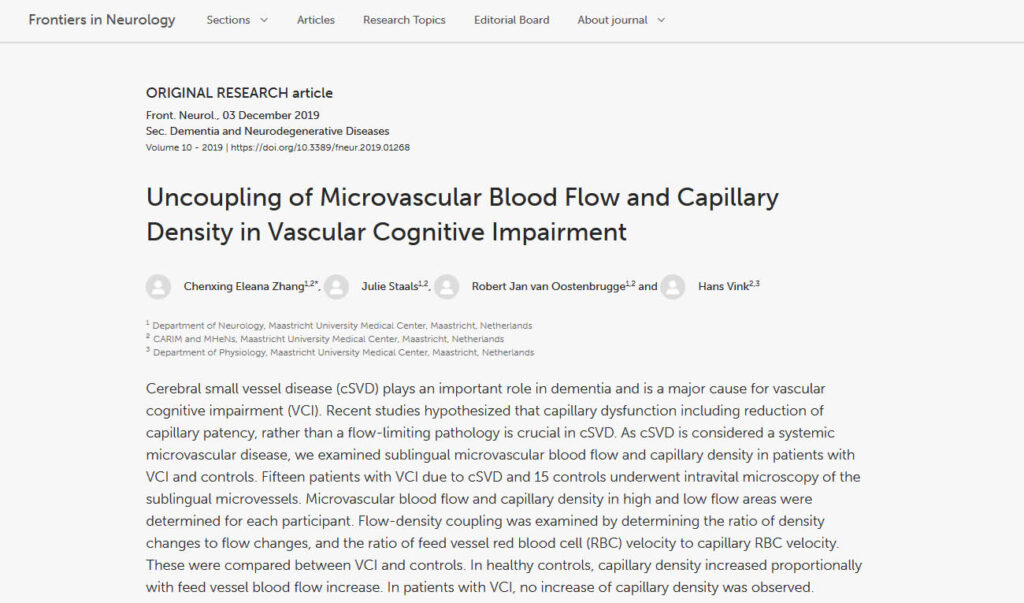Abstract
Cerebral small vessel disease (cSVD) plays an important role in dementia and is a major cause for vascular cognitive impairment (VCI). Recent studies hypothesized that capillary dysfunction including reduction of capillary patency, rather than a flow-limiting pathology is crucial in cSVD. As cSVD is considered a systemic microvascular disease, we examined sublingual microvascular blood flow and capillary density in patients with VCI and controls. Fifteen patients with VCI due to cSVD and 15 controls underwent intravital microscopy of the sublingual microvessels. Microvascular blood flow and capillary density in high and low flow areas were determined for each participant. Flow-density coupling was examined by determining the ratio of density changes to flow changes, and the ratio of feed vessel red blood cell (RBC) velocity to capillary RBC velocity. These were compared between VCI and controls. In healthy controls, capillary density increased proportionally with feed vessel blood flow increase. In patients with VCI, no increase of capillary density was observed. Moreover, increase of feed vessel RBC velocity led to significant increase of capillary RBC velocity in VCI, whereas in controls, the capillary RBC increased only slightly. Flow-density coupling differed significantly between VCI and controls, also after correcting for age and hypertension. Our findings suggest uncoupling of microvascular blood flow and capillary density in patients with VCI. This uncoupling may impair oxygen and nutrients exchange when blood flow increases in response to increased metabolic demand, ultimately leading to tissue damage.


